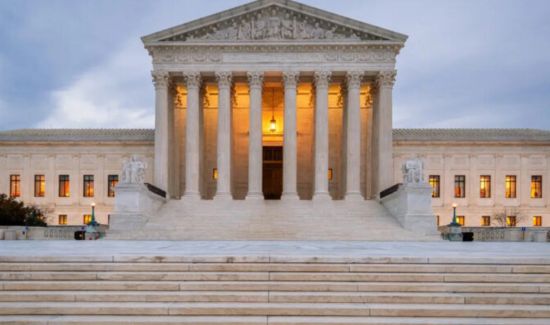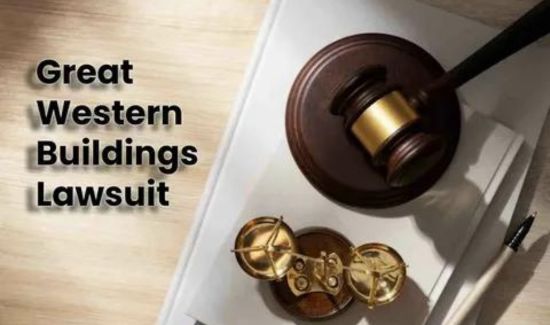In the past few years, a lawsuit has been building up that has caught the attention of both lawyers and architectural fans. The “Great Western Buildings lawsuit” is about a group of famous buildings in the western part of the US. It brings up important issues of ownership, protection, and the place where art and business meet.
Origins of the Great Western Buildings
The Great Western Buildings were founded in the mid 19th and early 20th centuries, when Western US growth and development were fast. Architects were inspired by Art Deco, Gothic Revival, and Modernism, developing a varied range of buildings that still reflect the era’s architectural innovation.

Wealthy entrepreneurs wanted to put their mark on growing cities like Los Angeles, San Francisco, and Seattle by commissioning these buildings. Residents and visitors loved these towering skyscrapers, theaters, and civic facilities as symbols of development and wealth. After decades, the urban environment changed, making the destiny of these historic landmarks unidentified, leading to complex legal fights that continue today.
The Dispute: Who Owns the Rights?
All sides in the Great Western Buildings lawsuit defend their claims. The question to consider is whether the original architects, subsequent owners, or the communities where these structures are located can decide their fate. Some say the architects’ vision should be prioritized, while others say the present owners should make decisions for themselves.
However, community activists and preservationists argue that these famous structures belong to the public domain and should be examined and publicized before any changes or demolitions. Given these different views, the courts must resolve property law, intellectual rights, and the intangible cultural value that these buildings hold for their communities. The final outcome of this issue will affect architectural heritage and the balance between commercial interests and the common good.
Preservation versus Development
The conflict between preservation and development is major. On one hand, advocates of preservation passionately defend these famous monuments against modern development, pointing to their historical and cultural significance. They claim that these buildings represent the Western frontier’s architectural legacy and reflect a bygone duration.
Proponents of development contend that these buildings should be reused and renovated to satisfy the demands of a quickly changing society. They argue adaptive reuse could bring life to these structures and improve their communities’ economies and societies. The inherent significance of these buildings and the reality of urban expansion and change make it difficult to balance preservation and development.
Legal Battles and Courtroom Drama
The Great Western Buildings case has been marked by legal battles and courtroom drama. Because there is a lot in stake and different interests at play, lawyers on both sides have spent a lot of money building their cases. It is believed that there are heated arguments about property rights and tough cross-examinations of expert witnesses. The courtroom has turned into a battleground where the fate of these iconic structures hangs in the balance.

Every legal move and argument could affect the judge’s decision, which makes people very emotional. The media also love speculating about every turn and twist in the case. Even though there is a lot going on, justice and the law are being tested as lawyers try to find their way through complicated legal systems and past cases in order to win.
Public Opinion and Community Involvement
Public opinion and community involvement significantly impact the Great Western Buildings lawsuits. As the legal trouble unfolds, people around these historic structures become deeply invested in their fate. Locals see these structures as cultural landmarks and part of their past, sparking passionate debates and grassroots movements to preserve them.
Other voices in these communities encourage economic development and see progress and regeneration through redevelopment projects. This conflict has produced heated debates and public forums where residents measure the past against the future. The public’s involvement complicates legal proceedings because judges must balance stakeholder interests.
Implications for Architectural Heritage
The Great Western Buildings lawsuit raises significant issues concerning iconic structure preservation. If ownership rights facilitate commercial development over cultural significance, would these buildings lose their historical value? This dilemma underscores the difficult balance between progress and preservation and the need to consider our architectural history.
This legal battle could also influence future cultural site conflicts and how societies maintain their built environment. Developer rights may reflect a move toward preferring economic concerns over cultural and historical significance of architectural sites. Conversely, a preservation decision could highlight the necessity of conserving our legacy for future generations.
The Role of Intellectual Property Law
Intellectual property law shapes the legal dispute. Intellectual property law governs who can modify, copy, or profit from creative works, including building designs. The dispute lies on whether the original architects or subsequent owners hold these iconic buildings’ intellectual property.

Furthermore, intellectual property law serves architectural integrity with innovation and advancement. It protects creators’ artistic vision, nevertheless preservationists, developers, and the public often dispute. Intellectual property law will impact the Great Western Buildings lawsuits and the future of architectural heritage in the West and beyond.
Potential Resolutions and Compromises
The Great Western Buildings lawsuit’s potential resolutions and compromises offer hope for a balanced agreement that respects property owners’ rights and architectural heritage. Mediation or arbitration could help the parties reach a contract that allows the buildings to be developed or renovated while ensuring their historical significance. Conservation easements or other legal methods might protect the buildings’ integrity while enabling modern modifications or improvements.
A resolution might also make a trust or nonprofit to maintain the Great Western Buildings. By pooling the resources and expertise from stakeholders, such an entity could protect these architectural treasures and satisfy property owners’ and developers’ concerns. Public-private partnerships or fundraisers could also fund repair and maintenance to make sure iconic buildings inspire and enhance future generations.
Conclusion
The Great Western Buildings lawsuits highlight the complexities of cultural heritage preservation and ownership. As the court case goes on, it shows how important it is to find a good balance between saving historic buildings and letting responsible development happen. The outcome of this lawsuit will affect architectural heritage and intellectual property law. No matter what the final decision is, one thing is clear: the Great Western Buildings are more than just buildings; they are symbols of our past and identity as a community, and they should be carefully cared for by future generations.
